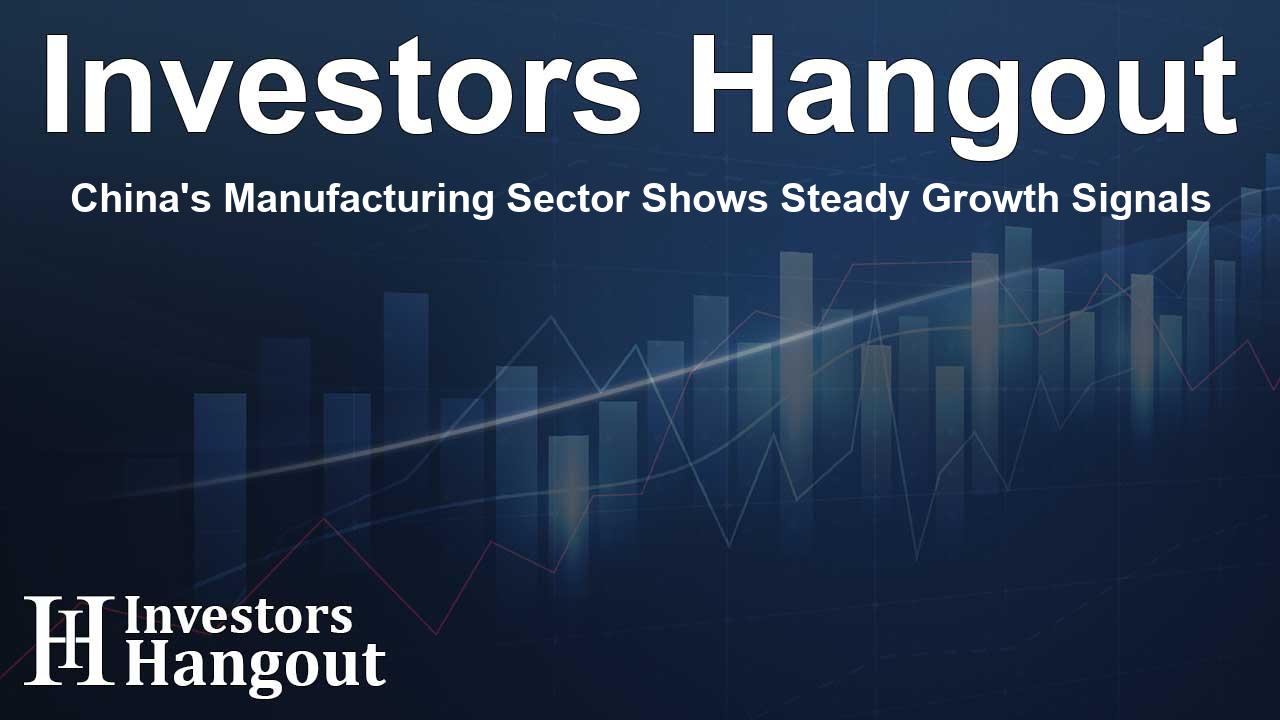China's Manufacturing Sector Shows Steady Growth Signals

Understanding China's Recent Manufacturing Growth
In recent developments, China's manufacturing sector has shown signs of steady growth over the last few months. According to an official survey, December marked the third consecutive month of expansion within this vital sector, although the pace of growth has shown some moderation.
Decoding the Manufacturing Figures
The official purchasing managers' index, commonly known as PMI, recorded a figure of 50.1 in December. This number is slightly lower than the 50.3 observed in November but still remains above the crucial threshold of 50. This threshold indicates a continuing growth trajectory rather than a contraction.
Importance of the PMI Data
PMI is an essential indicator that provides insights into the health of the manufacturing economy, reflecting how firms are operating under current conditions. A figure above 50 suggests that more businesses are experiencing an expansion rather than a contraction. Despite the decline from November's readings, analysts understand this trend as a signal that China's economic activities are still robust.
Factors Influencing Growth
Several initiatives and stimulus measures introduced by the government are believed to be positively impacting the manufacturing sector. These measures aim to foster economic resilience and ensure that the manufacturing industry continues to thrive, even amid challenging global economic conditions.
Challenges Ahead
While there are positive indicators, analysts caution that the manufacturing sector still faces challenges ahead, including external pressures from global markets and potential disruptions caused by trade tensions.
Market Reactions and Predictions
Market analysts are monitoring these developments closely, predicting potential fluctuations in response to both domestic and international economic policies. The ongoing performance of the manufacturing sector is critical to understanding broader economic trends.
Frequently Asked Questions
What does a PMI above 50 indicate?
A PMI above 50 indicates that the manufacturing sector is expanding, suggesting economic growth.
Why is December's PMI lower than November's?
The lower PMI can suggest a slower pace of growth, influenced by various market conditions and factors affecting production.
What role does government stimulus play in manufacturing?
Government stimulus can provide financial support and incentives for manufacturers, helping them adapt to changing economic conditions.
How do trade tensions affect manufacturing in China?
Trade tensions can create uncertainty, impacting supply chains and export demand, which in turn can affect manufacturing output.
What should we watch for in upcoming manufacturing reports?
Future reports will be important indicators of the manufacturing sector's health and the effectiveness of any stimulus measures.
About Investors Hangout
Investors Hangout is a leading online stock forum for financial discussion and learning, offering a wide range of free tools and resources. It draws in traders of all levels, who exchange market knowledge, investigate trading tactics, and keep an eye on industry developments in real time. Featuring financial articles, stock message boards, quotes, charts, company profiles, and live news updates. Through cooperative learning and a wealth of informational resources, it helps users from novices creating their first portfolios to experts honing their techniques. Join Investors Hangout today: https://investorshangout.com/
Disclaimer: The content of this article is solely for general informational purposes only; it does not represent legal, financial, or investment advice. Investors Hangout does not offer financial advice; the author is not a licensed financial advisor. Consult a qualified advisor before making any financial or investment decisions based on this article. The author's interpretation of publicly available data shapes the opinions presented here; as a result, they should not be taken as advice to purchase, sell, or hold any securities mentioned or any other investments. The author does not guarantee the accuracy, completeness, or timeliness of any material, providing it "as is." Information and market conditions may change; past performance is not indicative of future outcomes. If any of the material offered here is inaccurate, please contact us for corrections.